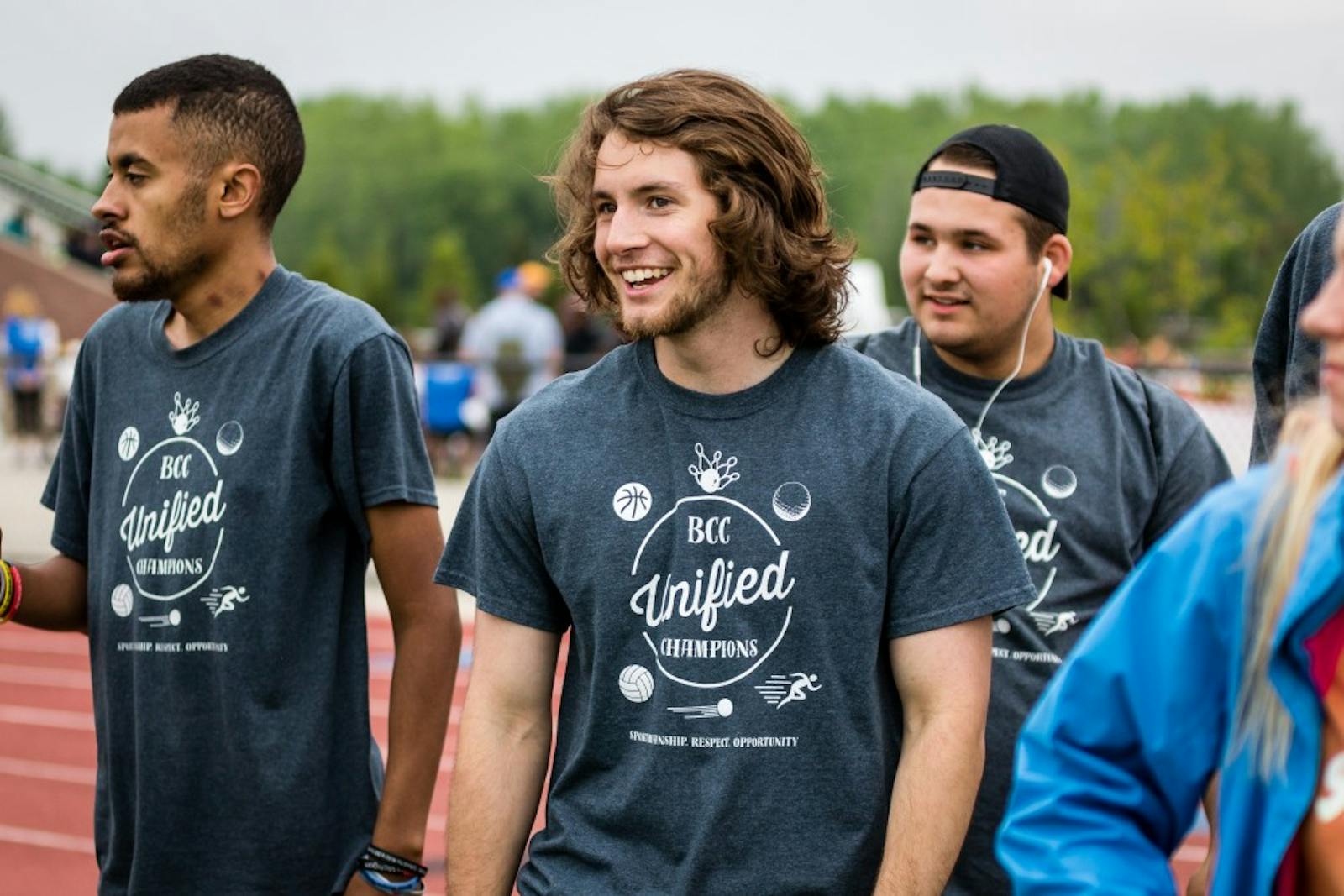'It's not only a team, it's a family:' Bay City Central team exemplifies the goal of Unified sports
Although they placed second, the wolves of Bay City Central High School could have placed first in terms of spirit

The Bay City Central Unified track team celebrates after their finish in the track and field events May 30 at Bennett Track.
From the pop of the starting gun to the last gray shirt crossing the finish line, the Unified track team from Bay City erupted with joy at every pass of the baton. Every member was met with congratulations and pats on the back like they just won a world championship.
After the race, Army servicemen placed medals around their necks. Although they placed second, the wolves of Bay City Central High School could have placed first in terms of spirit, exemplifying what Unified sports are about.
The Unified Sports program is a division of Special Olympics that places people with intellectual disabilities (Special Olympics athletes) and without (Unified Partners) on the same team. By doing this, Unified Sports teaches people the value of inclusion, acceptance and teamwork.
At the Special Olympics Michigan State Summer Games, Unified sports competitions took place Thursday, May 30 before the opening ceremony.
The Area 9 team, which includes Bay and Arenac counties, impressed spectators both athletically and emotionally. On the back of their gray shirts, the Area 9 team proudly displayed a famous quote from J.K. Rowling: “It is our choices that show what we truly are far more than our abilities.”
Justin Viaw Jr., a Special Olympics athlete, turned to Unified sports as his last option to be involved in athletics before he graduated. High school Spanish teacher Penny Hildinger suggested he join. He signed up, not knowing what to expect. Viaw competed in bowling his first year in Special Olympics, the next he added basketball, and this year he’s in as many sports as he can be in.
“I recommend any beginners try out for a (Unified) team,” Viaw said. “You can join sports that you may have never been able to join in life.”
His favorite memory of Special Olympics is when he attempted a half-court shot in the first quarter of a basketball tournament. Even though he barely missed, he remembers receiving a lot of support from his family and teammates.
“With Unified (sports) it’s not only a team to us, it’s a family," Charles Elankenship said. "It’s a support system for those who need it. Even if they aren't from Bay City, I still feel like there’s that family connection.”
Special Olympics entered Elankenship’s life when he was 6 years old. He competed in track, soccer and basketball before he transitioned to Unified sports in eighth grade.

Bay City Central Unified track members Dylan Steele (center) and Charles Elankenship (right) walk off the track after their race May 30 at Bennett Track.
“My favorite memories were made just now, being with this group and seeing how it impacts the community,” Elankenship said. “I need this positivity for my depression. Every time I’m back here they cheer me up.”
The team began training for track and field in early March. Practices were two or three days a week, and the team enjoyed every moment.
“It’s such a positive atmosphere, the only thing we don’t put up with is negativity,” said Dylan Steele, a Unified Partner on the BCC team.
Steele found out about Special Olympics from Hildinger, who was cheering on the team during the relay. Since then, Steele has participated in Unified basketball, golf, soccer and more.
He worked to get his friends involved and founded a youth activist committee for Special Olympics and Unified sports at his school. The committee's goal is to elevate Unified to the same level as junior varsity and varsity high school sports.
“People think Unified sports and Special Olympics is just about the sports, but it’s so much more than that.” Steele said. “Since the program started at our school, nobody sits alone at lunch anymore, there’s no more bullying in the hallways, kids with intellectual disabilities feel like they belong.”






